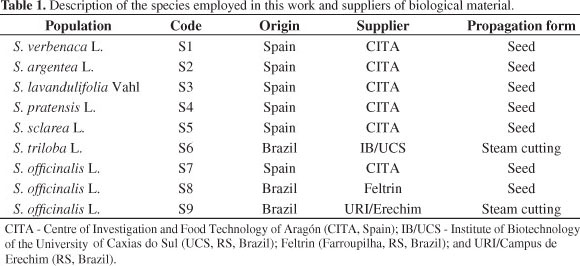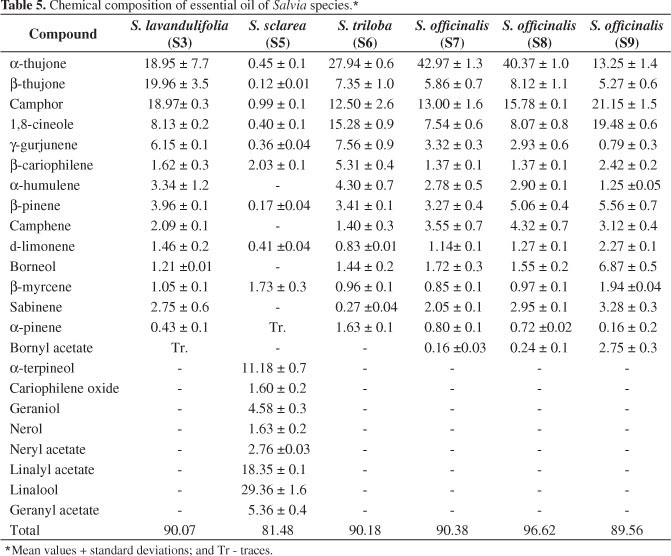The aim of this work is to assess the morphological characteristics and parameters of biomass production, such as fresh and dry matter weight (FMW and DMW, g/plant), yield of dry matter (YDM) in terms of ton/ha, essential oil content (EOC, mL/100 g) and yield of essential oils (YEO) expressed as L/ha of the following plants Salvia verbenaca, Salvia argentea, Salvia lavandulifolia, Salvia pratensis, Salvia sclarea, Salvia triloba and Salvia officinalis. Except for Salvia argentea (S2) all other species have adapted to the south Brazilian climate conditions, with morphological differences among the species evaluated. In terms of DMW and YDM, S. officinalis was found to be the most productive species with 445.83 g/plant and 11.14 ton/ha. The higher essential oil content and yield was observed for S. officinalis, affording 1.99 mL/100 g and 221.74 L/ha, respectively. Chemical characterisation of the essential oils obtained from hydrodistillation was performed through GC and GC/MSD analyses, which revealed for most of the species studied, α e β-thujone, camphor and 1,8-cineole as major compounds, apart from S. sclarea, for which linalool, linalyl acetate and α-terpineol were the major components.
sage; morphological characteristics; essential oil; biomass production; agronomic characteristics





